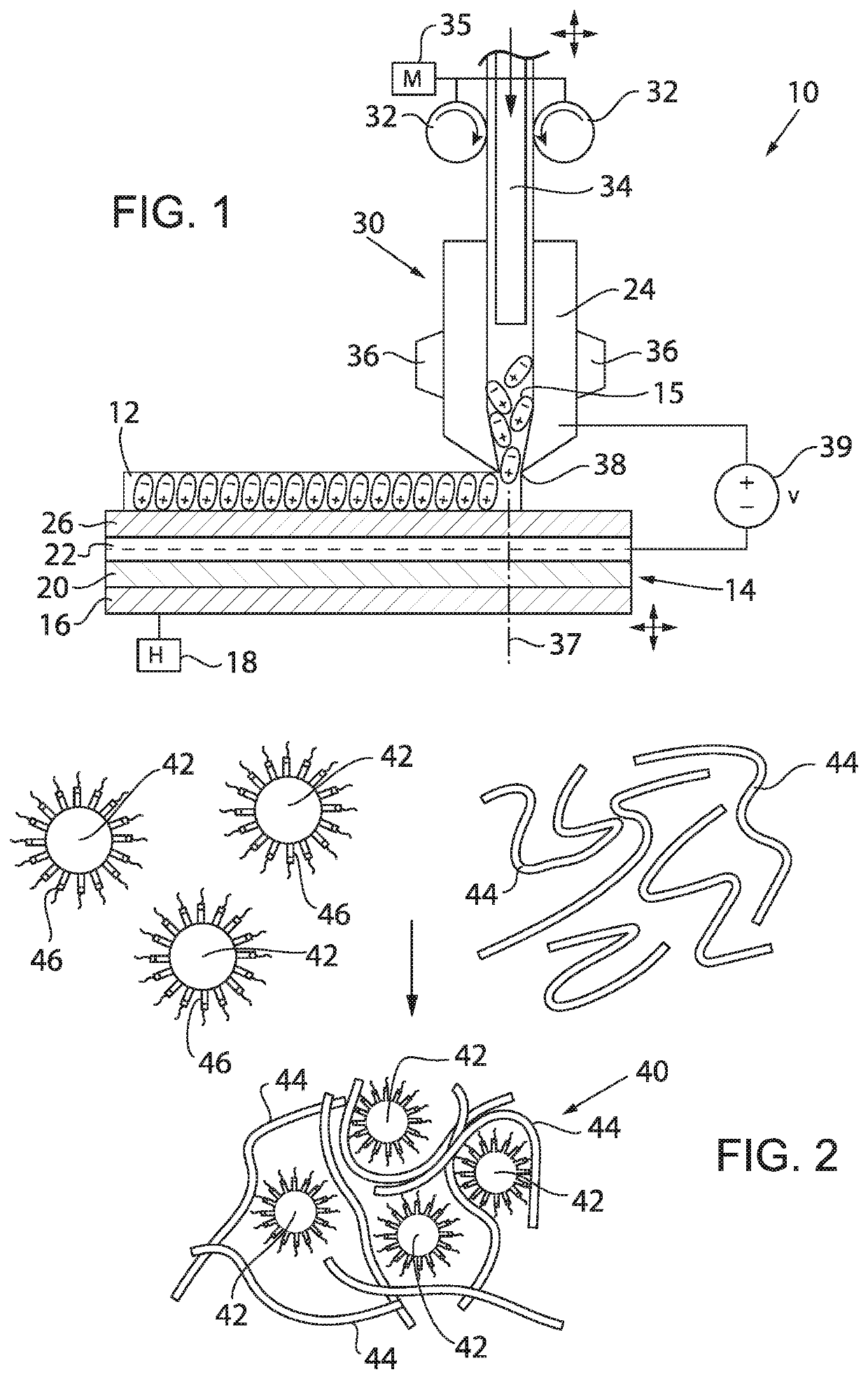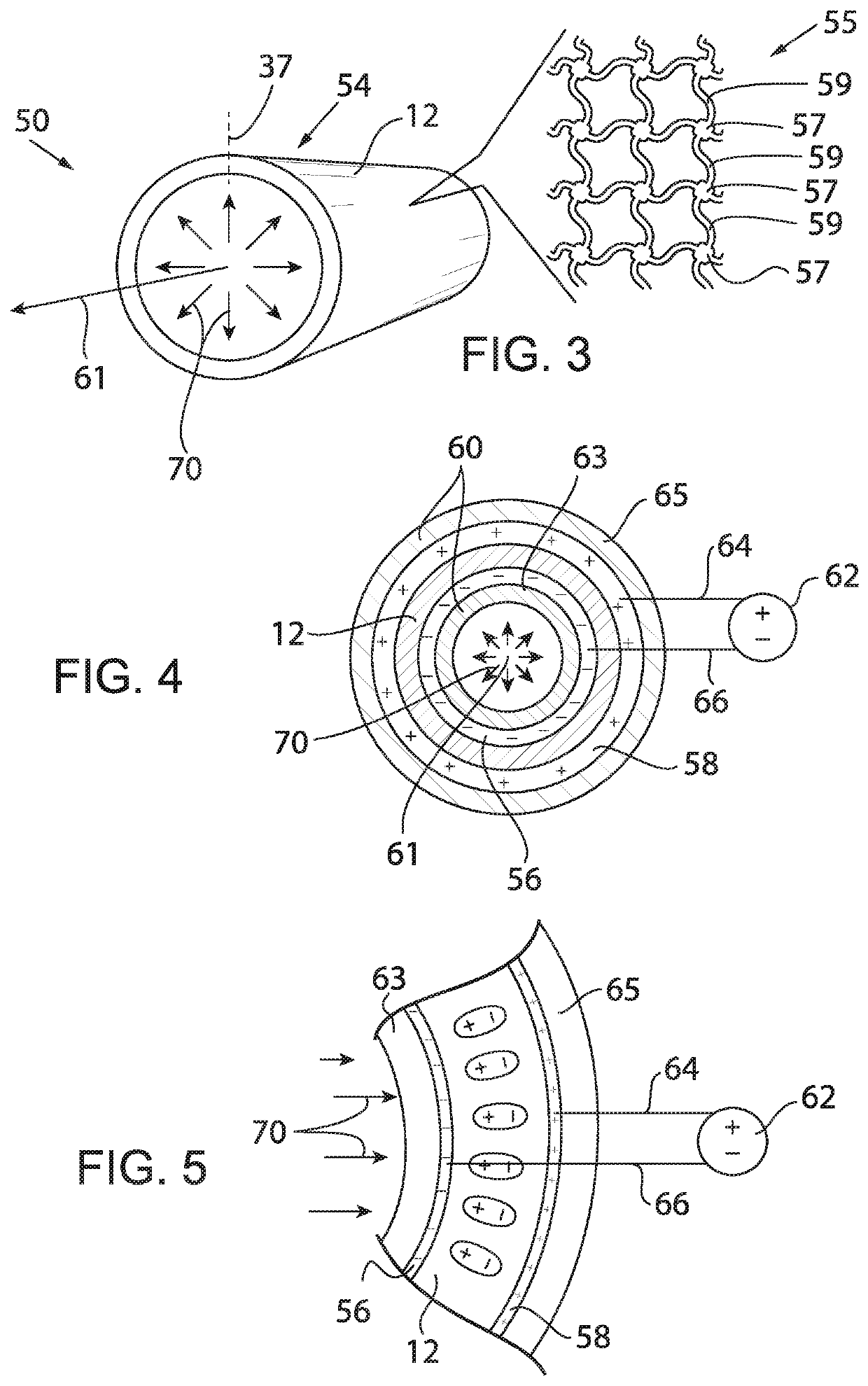3D Printed and In-Situ Poled Flexible Piezoelectric Pressure Sensor
a flexible piezoelectric and pressure sensor technology, applied in the field of 3d printed artificial blood vessels, can solve the problems of increasing manufacturing time, long poling time, and difficult poling, and achieve the effect of outstanding piezoelectric responses and better monitoring local physiological signals
- Summary
- Abstract
- Description
- Claims
- Application Information
AI Technical Summary
Benefits of technology
Problems solved by technology
Method used
Image
Examples
Embodiment Construction
[0047]Referring to FIG. 1, a 3D printing system 10 of the present invention for fused deposition modeling (FDM) may be used with an electric poling process in the manufacture of piezoelectric substrates 12, for example, that may be used to manufacture artificial biological systems such as artificial arteries within the body.
[0048]The 3D printing system 10 may include a build plate 14 providing a substantially planar surface on which the extruded molten material is deposited, layer by layer, during 3D printing. The build plate 14 may be moved vertically up and down, for example, lowered as the layers are added, and translated in all directions within a plane of the build plate 14 to assist with building the shape of the printed object as understood in the art. The build plate 14 includes multiple layers of materials that are used to heat and / or support the extruded material 15 but also to produce an electric field between the build plate 14 and a print nozzle to pole the extruded mat...
PUM
| Property | Measurement | Unit |
|---|---|---|
| Curie temperature | aaaaa | aaaaa |
| force | aaaaa | aaaaa |
| thickness | aaaaa | aaaaa |
Abstract
Description
Claims
Application Information
 Login to View More
Login to View More - R&D
- Intellectual Property
- Life Sciences
- Materials
- Tech Scout
- Unparalleled Data Quality
- Higher Quality Content
- 60% Fewer Hallucinations
Browse by: Latest US Patents, China's latest patents, Technical Efficacy Thesaurus, Application Domain, Technology Topic, Popular Technical Reports.
© 2025 PatSnap. All rights reserved.Legal|Privacy policy|Modern Slavery Act Transparency Statement|Sitemap|About US| Contact US: help@patsnap.com


